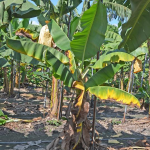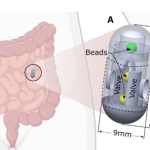A stunning new study has revealed that the infamous zombie-ant fungi—known for hijacking insect minds—have been waging biological warfare since the age of dinosaurs.
Published in Proceedings of the Royal Society B, the research describes two fossilized fungi entombed in Burmese amber from nearly 99 million years ago, offering the earliest direct evidence of ancient entomopathogenic fungi—those that infect and kill insects.
Preserved Parasites from Prehistoric Times
The newly described species, Paleoophiocordyceps gerontoformicae and P. ironomyiae, were found infecting an ant pupa and a fly, respectively. Both resemble modern members of the Ophiocordyceps genus—the same fungal group behind today’s “zombie-ant” behavior seen in tropical rainforests.
“These fossils are extraordinary because they show that insect-fungal relationships have been ecologically significant for over 100 million years,” said lead author Dr. Yuhui Zhuang.
Using micro-CT scans, the team revealed how the fungi grew directly from the insect hosts—emerging from precise anatomical locations, just like modern entomopathogenic fungi do.
Fungal Evolution Decoded
Through molecular dating and ancestral host mapping, the researchers determined that the Ophiocordyceps lineage likely originated approximately 133 million years ago, during the Early Cretaceous period. Initially infecting beetles, they later jumped hosts to moths and ants, coinciding with the rapid diversification of these insects.
These fungal specialists seem to have evolved alongside their hosts—diversifying as ants and moths flourished across prehistoric ecosystems.
Ancient Social Immunity?
One fossil, the infected ant pupa, shows signs of being discarded from the nest by worker ants—a behavior still practiced today to prevent outbreaks. This suggests that ant social immunity may have already evolved by the mid-Cretaceous, reinforcing theories of early eusocial behavior in these ancient insects.
Why This Matters
Entomopathogenic fungi are already used as natural biopesticides. Understanding their deep-time evolution could:
- Help improve biological control strategies.
- Reveal how parasitism shapes insect behavior and biodiversity.
- Provide insight into ancient ecosystem dynamics.
“These fossils are more than curiosities—they’re missing links in the evolutionary history of biological warfare,” said Dr. Bo Wang, co-author, and paleomycologist.
Key Takeaways:
- Ancient zombie-ant fungi existed 99 million years ago.
- They likely originated with beetles, later infecting ants and flies.
- Host-parasite coevolution between fungi and insects is deeply rooted in Earth’s history.
- Ants may have had social disease management systems even during the dinosaur era.

Fossils That Fought Back
Preserved in amber from northern Myanmar, these microscopic battles from the past remind us that warfare isn’t just a human invention—nature has been fighting its own silent wars for eons.
With this discovery, ancient entomopathogenic fungi take their rightful place as one of Earth’s most persistent and quietly terrifying evolutionary forces.
Reference
Zhuang, Y., Luo, C., Tang, D., Araújo, J. P. M. D., Yu, H., Zhao, J., … & Wang, B. (2025). Cretaceous entomopathogenic fungi illuminate the early evolution of insect–fungal associations. Proceedings B, 292(2048), 20250407. https://doi.org/10.1098/rspb.2025.0407







